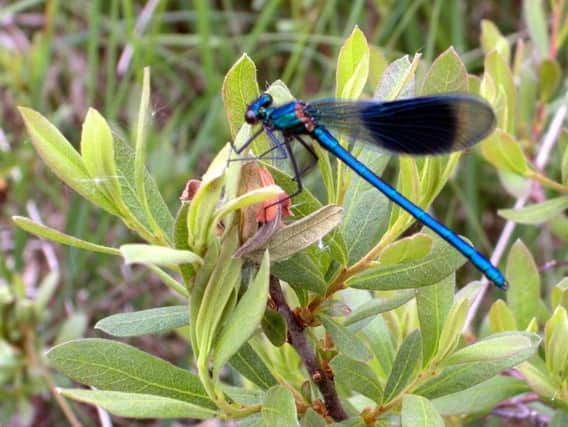Why dragonfly-spotting is the new birdwatching - Roger Ratcliffe


Advertisement
Hide AdAdvertisement
Hide AdThankfully they were easy to locate. A complex of specially constructed dragonfly ponds – four main ones and at least as many smaller ponds dotted nearby – were created more than a decade ago under the expert guidance of Dr Peter Mill, a retired Leeds academic and one of the reserve’s stalwarts.
It is here that 18 different dragonfly and damselfly species have been recorded, reason enough for the ponds to be awarded that hotspot designation by the British Dragonfly Society. And it is here that I came to realise – judging by the large number of people gathered round them with binoculars, telescopes and cameras – that identifying them has become the new birdwatching.
A man pointed to one of the larger ponds. “There’s a broad-bodied chaser about,” he said with obvious excitement, so I strolled across and scanned the surface with its shiny raft of water lilies.
To be honest, I wasn’t sure what I was looking for but fortunately a woman sitting on a nearby bench helped me out. “A male broad-bodied was here a minute ago. Wait a minute… there it is…” She gestured to something that looked like a miniature First World War biplane buzzing across the pond’s surface. It had a pale blue body, and through my binoculars its wings seemed to be made of cellophane.
Advertisement
Hide AdAdvertisement
Hide AdIt was soon gone, but there was plenty more dragonfly and damselfly activity going on to keep me occupied for over an hour.
One species I needed no help to identify was the large red damselfly and I watched a couple engage in their characteristic copulating position, in which the vibrant red male and the red-black female form themselves into the shape of what looks like a buckled wheel.
There were plenty of common blue damselflies on the water lilies, their slender turquoise bodies glowing like little streaks of neon. Someone pointed out an azure damselfly but to me it looked identical to the common blue. Experts can tell them apart with ease, apparently, the diagnostic features being how thin the black lines are on the azure’s thorax and something called a “beer glass” mark. I couldn’t quite see that myself, and it felt a bit like trying to tell the difference between our more nondescript warblers in summer. This is a skill which no doubt improves with practice.
On another pond someone had a telescope trained on what was identified as a banded demoiselle. It’s more often found on riverbanks, but this real beauty – unlike most other species it has coloured wings – was sunning itself on the pond’s vegetation.
Advertisement
Hide AdAdvertisement
Hide AdWith just 50 species liable to turn up in the UK, it seems easier to learn dragonfly and damselfly identification than to differentiate between the 600 birds on the British list. I think I have just acquired a new hobby.